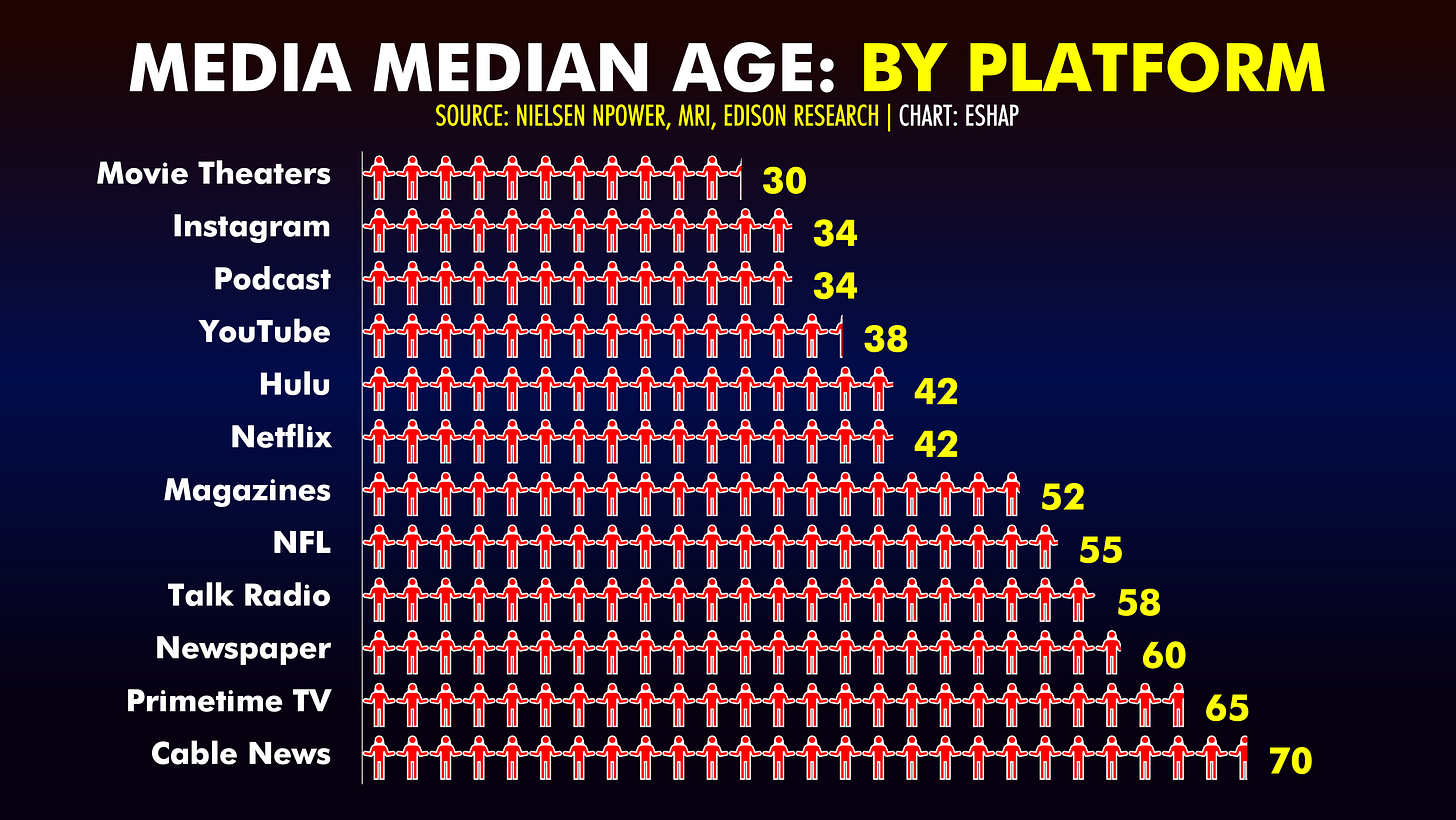Happy Sunday Peaceniks. Ready for some NEWS?
I was recently speaking to a room full of local broadcasters. During the presentation, I asked the attendees - all managers of local Broadcast stations - how many of them shared their local news programming, in its entirety, on YouTube or Facebook. None raised their hands. When I asked them why they did not distribute long-form news content on socials, there were rationales offered, but not any hard, fast rules, nor reasons to prevent it. In fact, when I asked if they streamed newscasts on their own websites and/or on FAST, many said they did.
Broadcast and Pay TV audiences are old, and getting older. Younger audiences watch far less Broadcast and Pay TV, even on Streaming apps. This is obvious, common knowledge. Consequently, News from Pay TV and Broadcasters skews old - the median age of local News is 64.6 years. It’s 70 years for national TV news (older even than news in print and on radio).
The two most fascinating facts about this demographic News schism:
How society - and the Media itself - use this data to (wrongly) convince themselves that “young people just don’t want News.”
How resigned most mainstream News Media are to losing those younger generations, forever.
Let’s be clear: People under 35 do consume News. Often. They do it very differently from older generations. More pointedly, younger consumers do want local News - but they want it on the platforms where they consume their News.
Local News in particular is facing a precarious moment - around the world, but especially here in the US. Local News outlets are closing at an alarming rate. 127 local newspapers shut down, just last year. Journalists are losing jobs across the country. The business of local News is becoming untenable. As the US pay TV universe shrinks, local Broadcast is losing its audience and its business model. This is dangerous on so many levels.
Northwestern’s Medill Local News Initiative estimates 55 million Americans now live in news deserts, with little or no access to information about their cities or communities. Firstly, this leaves huge swaths of the country without consistent and reliable News covering local issues, watchdogging local governments, creating community, informing the public about what’s going on around them. The follow-on effect is that local Broadcasters are losing touch with the audiences (younger and older) that they most need to keep their businesses alive.
It does not have to be that way.
As the next series of data lays out, there are two distinct Media ecosystems, living in parallel alongside each other, divided clearly between Millennials-and-younger and Gen-X-and-older. Yet, this divide does not cut along lack of interest in News. Quite the contrary.
The data also very plainly demonstrates that younger audiences do want News and crave local News in particular - only they get it from the sources where they get most of their Media: social and digital. Furthermore, the News habits of younger Americans are altering the way older consumers consume News as well.
As generations have shifted, so has the #1 way Americans get their local news. Nearly half of all Americans now prefer Social Media and digital outlets for their daily News.
That said, local TV still does have very loyal audience. 42% of Americans still watch local Broadcast TV every day.
But the generational divide within local Broadcast is stark.
Keep reading with a 7-day free trial
Subscribe to Media War & Peace to keep reading this post and get 7 days of free access to the full post archives.








